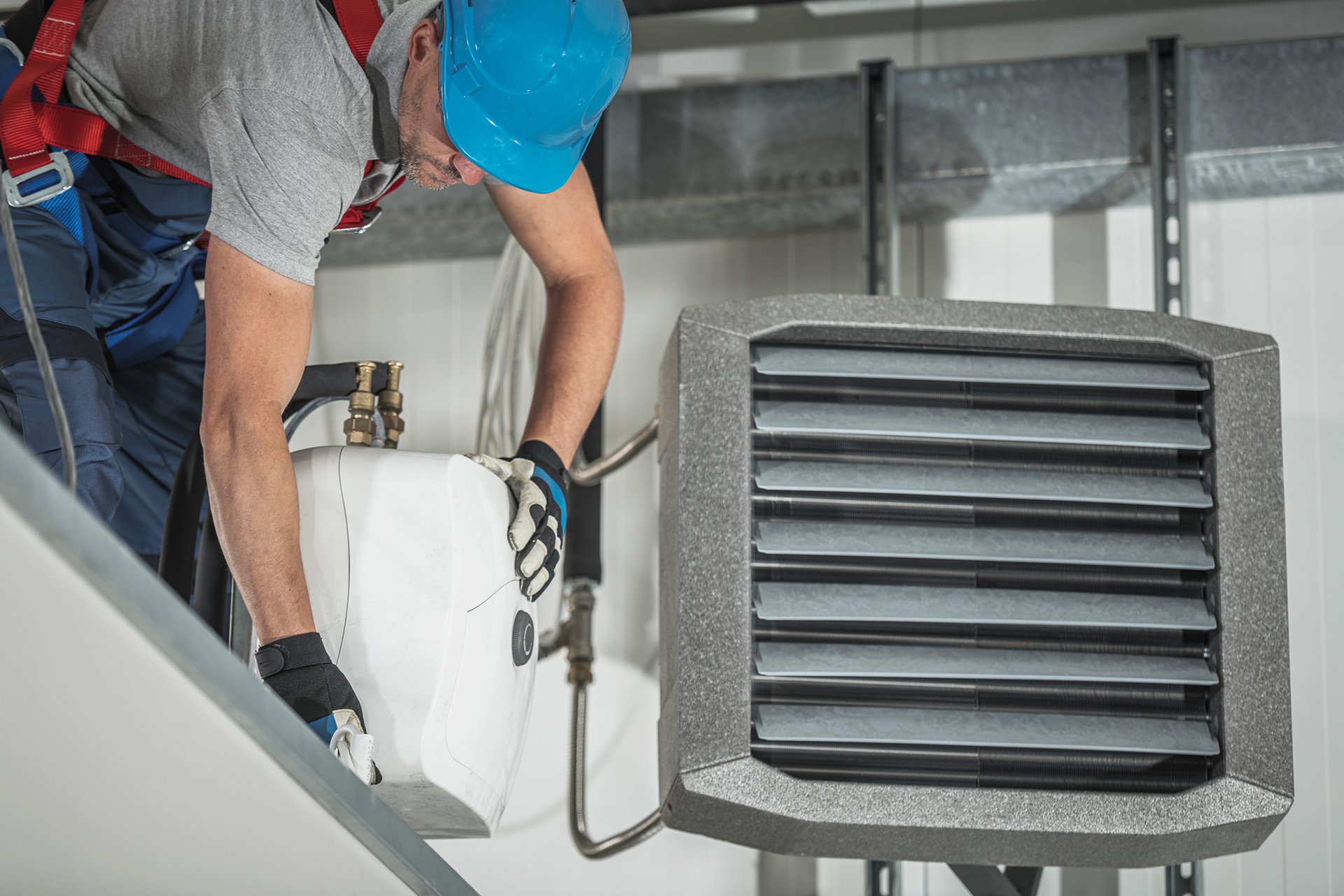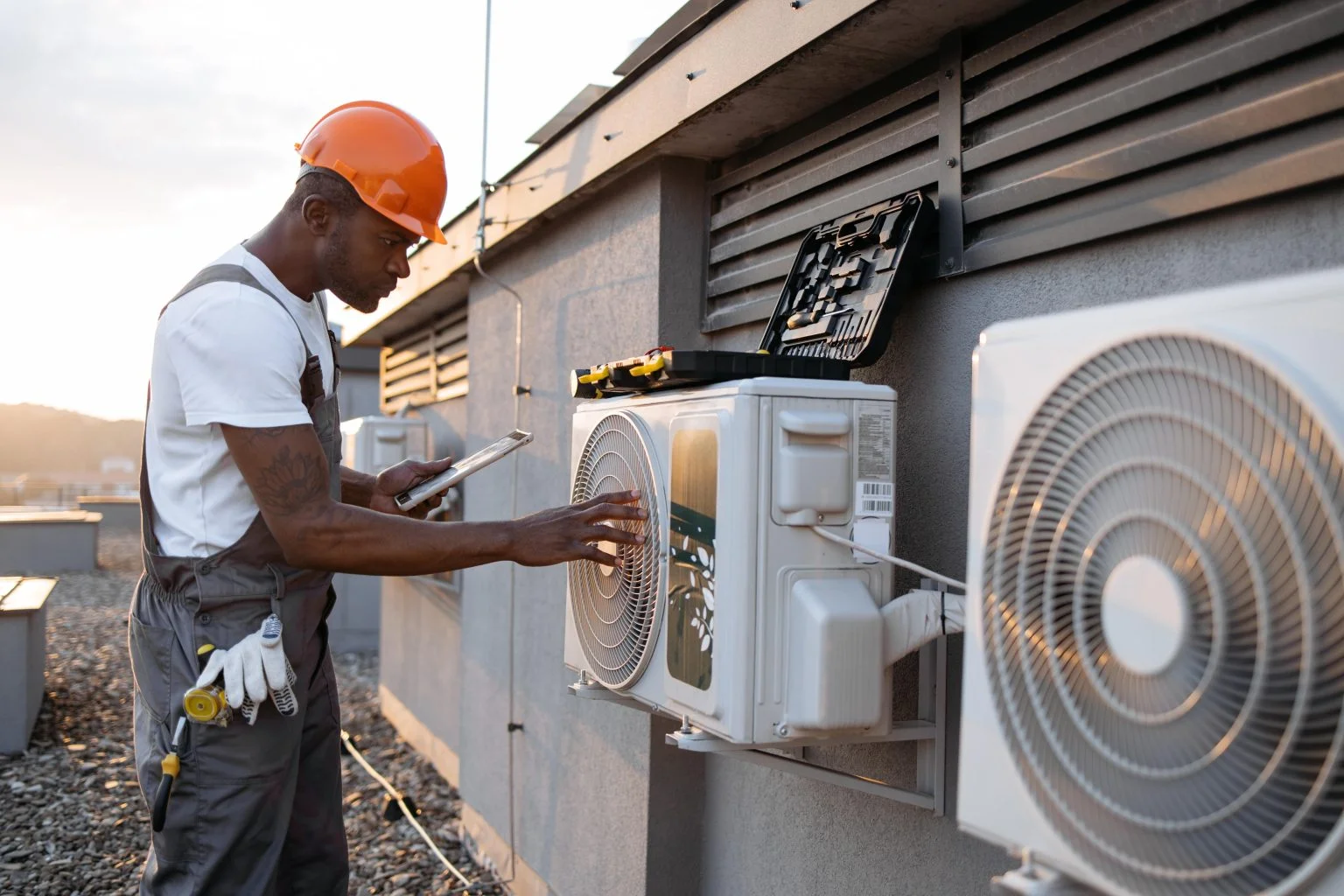How a Heat Pump and Furnace Work With Each Other to Maximize Your Home's Home heating Effectiveness
Recognizing how a heat pump and heating system job with each other is crucial for property owners looking for reliable home heating options. Each system has its staminas, giving a well balanced strategy to home convenience. The warmth pump masters moderate temperatures, while the furnace provides fast warmth during extreme cold. This harmony not just decreases power expenses however likewise enhances the life expectancy of both devices. What aspects influence this collaboration, and how can homeowners optimize their benefits?
Recognizing Heat Pumps: Exactly How They Work
Lots of people might be strange with their internal workings, warm pumps play a crucial duty in contemporary home heating systems. These tools operate by transferring heat from one location to another, utilizing the concepts of thermodynamics. In colder months, a heatpump extracts warm from the outdoors air, ground, or water, and transfers it indoors to warm up the home. Alternatively, throughout warmer months, it can turn around the process, working as an a/c unit by getting rid of warmth from inside to the outside.Heat pumps include an evaporator, compressor, growth, and condenser shutoff. The refrigerant within the system takes in warmth as it evaporates at reduced temperatures and pressures. The compressor after that enhances the pressure and temperature of the refrigerant, permitting it to release heat as it condenses. This reliable process can considerably reduce energy usage compared to typical heating methods, making heat pumps a lasting choice for climate control in homes.
The Role of Heaters in Home Heating
Furnaces play a crucial role in home heating by supplying a dependable source of warmth throughout the colder months. They run by producing warmth with burning or electric resistance, distributing it throughout the home via ducts or glowing systems. The efficiency of a furnace is frequently determined by its Annual Gas Use Effectiveness (AFUE) rating, which shows how effectively the device transforms gas right into heat.Furnaces can make use of numerous energy resources, consisting of gas, gas, power, or oil, enabling house owners to choose one of the most ideal choice for their needs. Unlike warmth pumps, which may struggle in severe cold, heaters preserve regular efficiency, guaranteeing that interior temperatures stay comfortable no matter outside conditions. Furthermore, modern furnaces typically come outfitted with innovative innovation, such as clever thermostats and variable-speed blowers, enhancing their effectiveness and responsiveness. This adaptability makes heaters a crucial component in all-inclusive home heating approaches.

Advantages of Making Use Of Both Equipments Together
Incorporating the staminas of both heaters and heat pumps can bring about an extra efficient and effective home heating option. Making use of both systems allows home owners to make use of the warmth pump's energy efficiency throughout milder temperature levels while relying upon the heater for more severe cold conditions. This double approach can significantly decrease energy costs, as warmth pumps consume much less electrical power than traditional home heating techniques when temperatures are moderate.Additionally, using both systems together can improve convenience degrees in the home. Heatpump can offer regular, also home heating, while heating systems can swiftly raise ambient temperatures when required. The combination of both systems can expand the lifespan of devices by minimizing wear and tear on each system, as they share the work. Ultimately, homeowners can appreciate a balanced, affordable home heating solution that changes perfectly to varying weather, making certain a cozy and inviting home throughout the winter season months.
Exactly How Warm Pumps and Furnaces Enhance Each Other
They produce a complementary home heating system that takes full advantage of efficiency and convenience when property owners incorporate warm pumps and furnaces. Heatpump run by transferring warm from the outside air or ground, making them highly reliable in moderate climates. They succeed throughout milder temperatures, giving cost-efficient home heating. Conversely, heating systems create warm with burning or electrical resistance, delivering strong, prompt warmth throughout severe cold conditions.The combination of these 2 systems allows for vibrant adjustments based upon temperature level fluctuations. During warmer months or milder winter months days, the warmth pump can take the lead, saving energy and lowering prices. As temperature levels drop, the furnace can perfectly engage, guaranteeing consistent warmth throughout the home. This harmony not just maximizes energy usage but additionally improves the lifespan of both systems, as each device operates within its suitable efficiency range. Together, they produce a balanced environment that adapts to differing climate demands.
Enhancing Efficiency: Tips for Homeowners
House owners can boost their home heating performance with numerous functional strategies. Developing a routine upkeep schedule, integrating clever thermostat innovation, and carrying out reliable insulation and securing solutions are vital actions. These actions not only improve comfort however also decrease power costs.
Routine Upkeep Arrange
To ensure optimal heating effectiveness, developing a normal upkeep schedule is vital for any home. Home owners should focus on regular examinations of both heatpump and heating systems to ascertain peak performance. This consists of changing air filters each to three months, as clogged up filters can considerably reduce performance. Furthermore, organizing specialist maintenance at least yearly enables professionals to recognize and address potential problems before they rise. Home owners must additionally clean up the heatpump's outside unit to stop particles build-up that can hinder air flow. By sticking to a routine upkeep timetable, house owners not only boost their home heating systems' effectiveness yet also prolong their lifespan, resulting in higher comfort and minimized power prices throughout the cooler months.
Smart Thermostat Assimilation
Integrating a wise thermostat into a home furnace can greatly enhance energy performance, particularly as it enables precise control over temperature level settings. These gadgets can find out the homeowner's timetable and choices, instantly adjusting the temperature level to maximize comfort while reducing power usage. As an example, they can decrease heating throughout times when the home is vacant, reducing unnecessary consumption. Lots of clever thermostats additionally provide real-time energy usage data, allowing house owners to make informed decisions regarding their heating routines. Additionally, remote accessibility by means of smartphone applications permits users to readjust settings from anywhere, making sure the home is warm upon return. Overall, smart thermostat combination not just improves convenience however substantially adds to energy cost savings and performance.
Insulation and Securing Solutions
Smart thermostats play a crucial role in power efficiency, however their performance can be substantially enhanced by proper insulation and sealing options. Property owners need to focus on protecting floorings, wall surfaces, and attic rooms to reduce warmth loss. High-quality insulation materials, such as spray foam or fiberglass, can substantially boost thermal resistance. Furthermore, sealing spaces around air ducts, home windows, and doors protects against chilly air infiltration and warm getaway. Weatherstripping and caulking work approaches for dealing with these leaks - heat pump replacement ooltewah tn. Normal assessments for air leakages, together with making use of blower door tests, can help determine issue locations. By buying insulation and securing, homeowners can optimize the performance of their heating unit, inevitably leading to minimized energy intake and lower utility expenses
Common Misconceptions Concerning Warmth Pumps and Furnaces
What misunderstandings border heatpump and heating systems? Lots of individuals wrongly believe that heat pumps are inadequate in chillier climates. Actually, modern-day warm pumps are made to operate effectively even in low temperatures, giving reliable heating throughout winter months. Another typical myth is that furnaces are always more reliable than warmth pumps. This depends on the particular energy resources and performance scores of the units in concern. Some may also assume that utilizing both systems at the same time is unneeded, however as a matter of fact, this mix can enhance heating performance, especially during extreme weather. Additionally, individuals usually think that warmth pumps require consistent maintenance, when in fact, they have similar maintenance needs to conventional home heating systems. By debunking these myths, home owners can make even more educated decisions concerning their home heating choices, inevitably bring about enhanced comfort and power effectiveness in their homes.
Maintenance Considerations for Combined Solutions

Often Asked Concerns
Can Warmth Pumps Job Properly in Extremely Cold Climates?
Warmth pumps can battle in very cold climates due to lowered efficiency and heat extraction constraints. Improvements in innovation have led to versions made for far better performance in such problems, improving their practicality in rough atmospheres.
How Much Time Do Warmth Pumps and Furnaces Usually Last?
Warm pumps normally last 15 to two decades, while heaters have a life expectancy of 15 to 30 years. Normal upkeep can prolong their longevity, ensuring effective operation and minimizing the requirement for early substitutes.

What Is the Average Cost of Setting Up Both Systems?
The typical cost of setting up both a heat pump and a furnace generally ranges between $5,000 to $10,000 - heat pump replacement ooltewah tn. Elements influencing this expense include system dimension, installation complexity, and regional labor prices
Exist Tax Obligation Incentives for Utilizing Energy-Efficient Heating Systems?
Lots of house owners ask about tax obligation incentives for energy-efficient heating systems. Various federal and state programs often use rebates or credit scores, urging the adoption of sustainable innovations to minimize power consumption and promote environmental obligation.
How Do I Pick the Right Size Heat Pump and Heater?
Choosing the right size heatpump and furnace includes determining the home's square footage, considering insulation top quality, and evaluating neighborhood climate. Consulting a specialist can assure optimal system performance and power performance based on details demands. ductless mini splits. Recognizing exactly how a warm pump and furnace job together is important for homeowners seeking effective home heating remedies. In cooler months, a warmth pump removes warm from the outdoors air, ground, or water, and transfers it inside to heat the living area. When homeowners integrate heat pumps and furnaces, they produce a complementary visite site home heating system that makes best use of effectiveness and comfort. Heat pumps run by transferring warm from the outdoors air or ground, making them extremely effective in modest climates. Warmth pumps can battle in exceptionally cold climates due to reduced performance and warmth extraction constraints